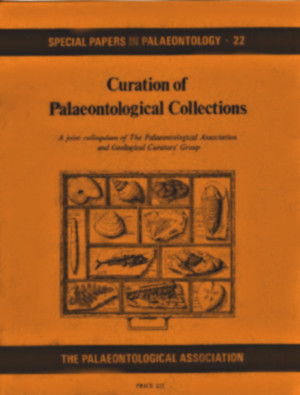Reg. Charity No. 1168330

The Palaeontological Collection at the University of Alberta, comprising one to two million fossils, was formed by combined donations from Shell Canada Ltd., J. C. Sproule and Associates Ltd., Imperial Oil Ltd., Gulf Oil Canada Ltd., Panarctic Oils Ltd., and the University of Alberta type collection. In order to accurately curate and permit easy access to information a computer-based retrieval system was designed using the SPIRES (Stanford Public Information Retrieval System) language. For each collection of fossils, twenty-five categories of information are input. From these, sixteen elements are stored in indices and are available to search procedures. One of the main advantages of the system is that all required catalogues, index cards, dictionaries, and cards for specimen trays can be generated from a single input of information. The SPIRES program is relatively easy to use even by people not familiar with computer terminology.